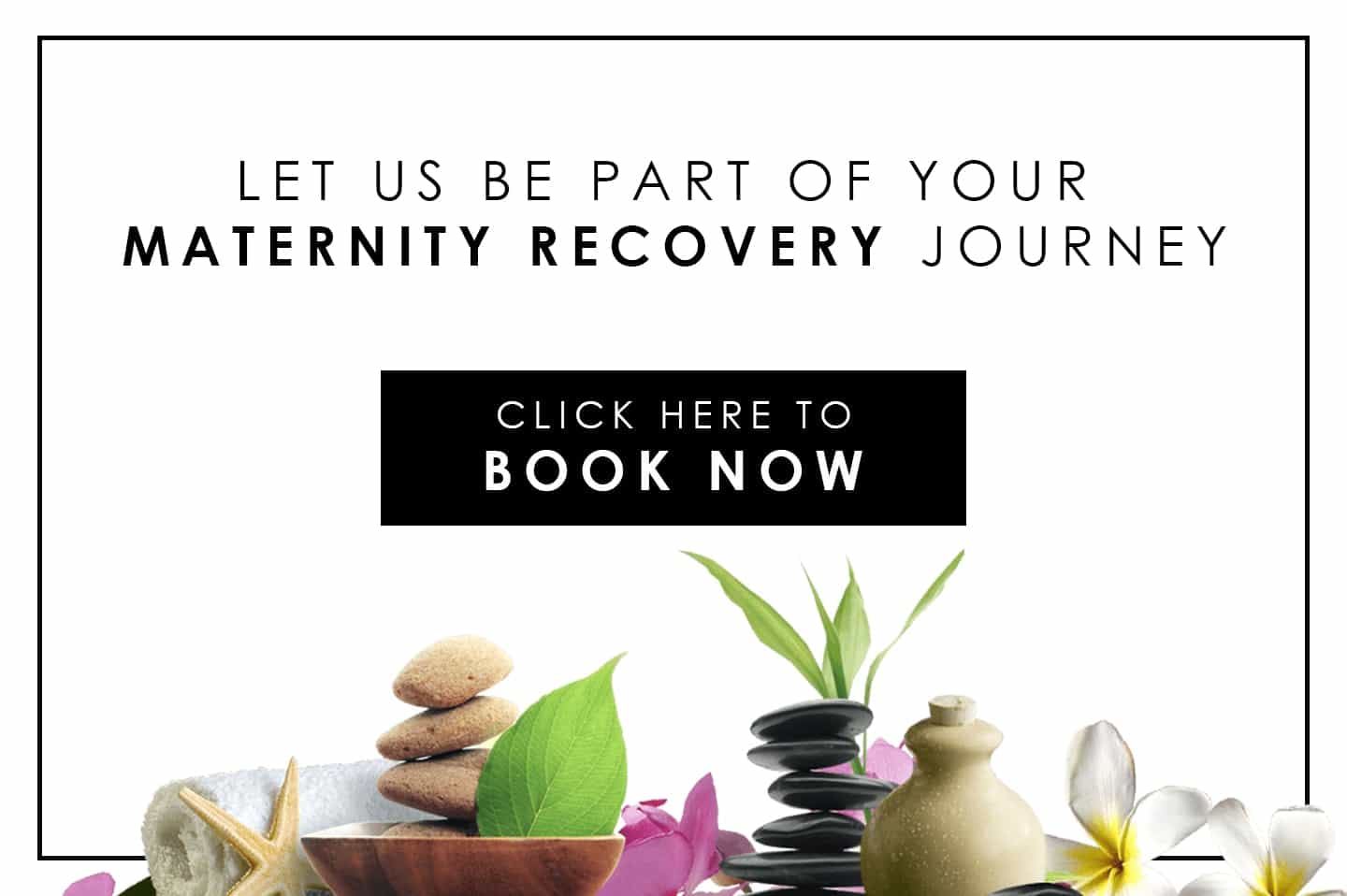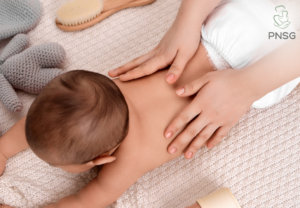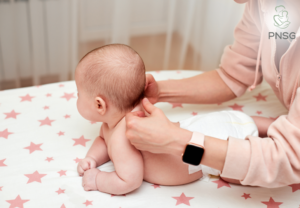7 Gambas Crescent, #09-09, Ark@Gambas, Singapore 757087 ♦ Reservation : +65 6417 9690
Our Masseuse’s Newborn Massage Tutorial
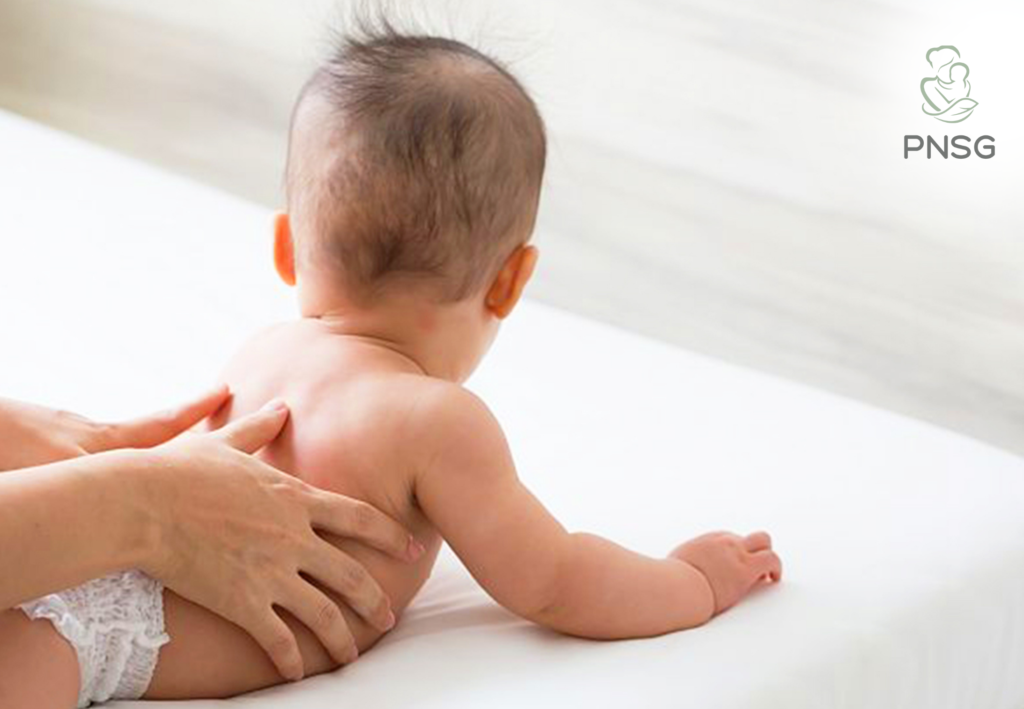
You’ve tried feeding your infant. You’ve changed their diapers. You are now pulling your hair out because your infant still keeps crying and crying and crying! Your eyes are red, and you’re now wishing that you could just sleep…if only your infant could tell you what is wrong…
Have you been through, are going through, or know someone going through such a scenario? May we suggest a massage?
Yes, you could do it with a postnatal massage from us! Meanwhile, for today, let’s focus on how to give a soothing massage to your little one too!
Baby massage can help babies relax their muscles, move and expel ‘trapped wind’, soothe them to sleep, and could help them develop a stronger immune system.
Some other advantages of massaging a baby include promoting growth by stimulating their nervous system, which promotes sensory development and even motor skills. In addition to that, it also helps improve their digestive system and blood circulation and reduces the discomforts caused by gas, congestion, or teething.
Things to Take Note Of When Massaging Your Baby
A few things to look out for before going in for that massage. It’s not the best time for a massage when your baby turns their head away from you or stiffens their arms. Also, try waiting at least 45 minutes after a feeding, as performing a baby massage too soon after they eat can cause vomiting.
The frequency of massage will depend on you and your baby. Some parents massage their baby daily, while others may opt for alternate days or even once a week. There is no right frequency here, but what is generally accepted is not to force a massage upon your child.
Nevertheless, we understand that you want to be as cautious as possible. In that case, here are several things you should consider before starting to massage your little one!
1) Introducing Your Baby to Massage
Your little one may be a tough baby, but it’s always better to be safe than sorry. Therefore, wait until they are around two weeks old before starting with the actual massage. Before that, daily massage in which only light touches are applied without any lotion or oil is highly recommended. You should lightly press their body parts and practise this every day from the first time they are brought home. It is safe to wait for days before using the oil because your baby’s skin barrier has not fully developed by then. If you proceed to treat it with a foreign substance right away, there may be certain undue reactions on your baby’s skin to the substance you use.
2) Choice of Oil
Stick with unscented and odourless oil to prevent reactions on your baby’s delicate skin. Just in case, make sure the oil you choose is edible if your baby has a habit of sucking their thumb. Pick oils that are suitable for use on sensitive skin. If your baby is already warm and cosy when you are about to massage them, putting cold oil may shock them and make them uncomfortable. Warm up the oil by rubbing them using your palms. If you are massaging them after their bath, applying warm oil would especially help to calm them down.
Next, make sure the oil is not directly dropped onto their skin. Put several drops in your hands before rubbing and applying it on your baby. If you are worried your baby’s skin could be more sensitive than expected, do a test patch. Using your finger, smear a tiny amount of oil on their elbows, behind their knees, or necks. Wait for around 15 minutes to see whether there is any reaction produced. If there isn’t any, then that oil is safe to be used on your little one. You can do the test patch on any other night you do not intend to start with the massage.
3) Overstimulation
Yes, this can happen. How do you know if your baby is overstimulated? First, they may act cranky or cry even more if the massage is meant to calm them down. They may show signs of refusal by turning away from you or moving in a jerky way. Lastly, they may clench their fists, wave their arms, or even kick your arms so as not to let you proceed.
Now, instead of putting your baby to sleep, you are putting them in even more discomfort and making them overwhelmed by the sensations or activity. This means what you are putting on your baby is beyond what they can cope with. Ramp down the stimulation by maintaining light pressure and going over each body part slowly. When starting at an area, begin with light touches before applying strokes.
4) Position
Certain massage techniques, like the ones to be performed on their back, would require your baby to be placed on their tummy. While this position should generally be fine, they should be kept in that position for a short time. Once you are done with the back massage, turn them around immediately (but not abruptly) and have them lie on their back again.
Make sure no parts are compressed, especially their arms and legs. This can prevent complications of blood flow that can lead to cramps. Since massage can stimulate the circulatory and digestive systems, you do not want to give the opposite effects of the two on your baby.
5) Timing
As you go through as much information as you can gather from the internet, you are probably setting aside time to perform this massage in your head. “This Saturday, after 9 PM, right around their bedtime.” Sounds like a plan? Yes, to you.
Unfortunately, your baby might not think so if they are not in the mood. It sure is a lot simpler if all it takes is for you to schedule the massage according to when you have the time for it or when you want to do it, but most of the time, that isn’t the case. You would be surprised by how demanding a newborn can be regarding such activities.
Since you need to have them in a calm mood before starting, some nights when they are extra fussy or cranky will not do. Don’t worry, it is not always bad! Perhaps your baby is behaving unexpectedly well on some other nights and will go to sleep early. You may not get the chance to even slot in the massage between their bath and sleep time.
6) Atmosphere
While this is pretty obvious, be sure not to perform the massage on a hard, cold surface. Aside from a wide bed, the best place to do it is on the changing mat. Not only are they already familiar with the place, but you also know they would be at ease having to lie there for some time. This will greatly ease your task at hand.
There also should not be a fan or air-conditioner blowing near where there are, especially since they won’t have their clothes on during the massage. If your baby has previously developed sleep association with music, you can put on calming music as the one they normally listen to before bedtime.
This can help calm your baby down and make their eyes heavy. If your baby is falling asleep by the time the message ends, gradually lower the volume instead of turning it off abruptly. Often, babies sleep better when there is white noise around them.
7) Health Issues
You should already know this by now but keep away from massaging your baby if they have certain health issues in which a massage may compromise their condition. If you are certain that their digestive and nervous systems can handle a massage, proceed to inspect their skin.
If they have rashes or eczema, you may want to put off the massage until the skin issues are treated. Look out for symptoms that indicate sensitive skin. You may find tightness, prickling, tingling, temporary redness, or dry skin if your baby has sensitive skin.
Your baby cannot verbally let you know whether they have the first three symptoms, but if you see inflamed patches, chances are your baby is experiencing all of them. That is why you have to choose their oils carefully. Get a recommendation from a doctor or opt for medicated oil from the pharmacy.
Massage Time!
Now that you’ve understood the benefits of baby massage and things to take note of let’s dive into how to do baby massage! Our masseuse recommends the following four steps to massage your baby, focusing on different parts of the body as we go:
Warm Up
Let’s take a more detailed look at the first step. For the warm-up, apply some baby oil onto your palms and gently rub it all over your baby’s tummy and behind their ears. As this is the opening step, do take note of your baby’s reaction towards your touch. If it is too cold, you may want to warm up your hands a little.
Legs
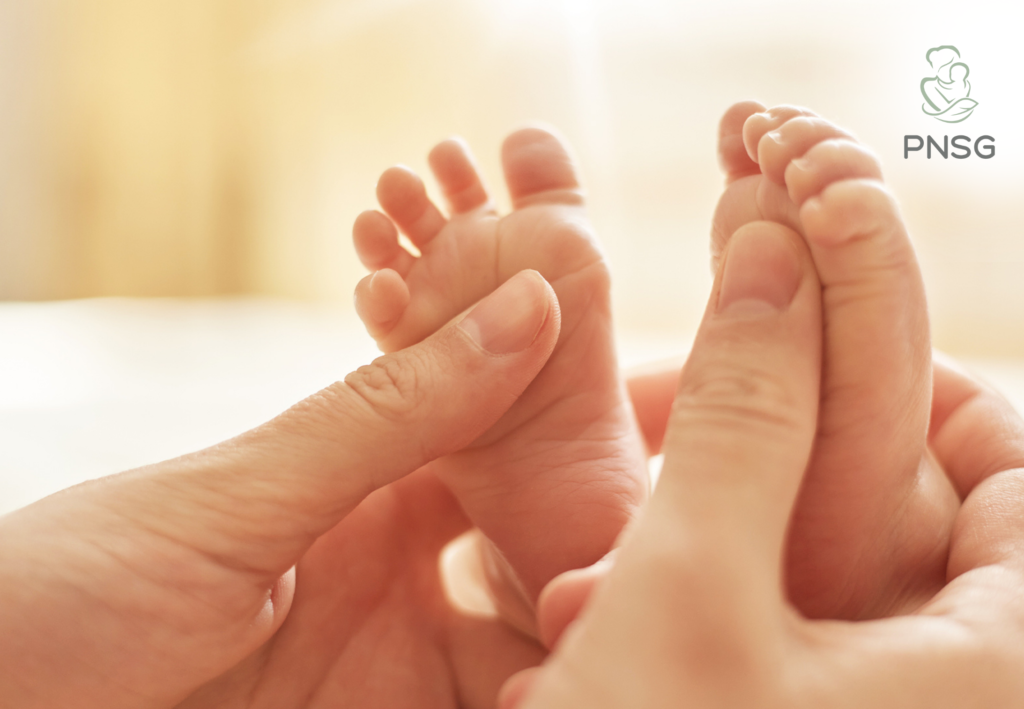
Next, we move on to the legs, massage your baby’s feet with your thumb by stroking gently and working your way from the heels towards the toes. With slow, gentle movements, make circles with your thumb at the bottom of the feet. Then, slowly stroke their ankles and make your way towards their thighs.
Tummy
Once that is done, stroke gently with the slightest pressure on top of the belly and below the chest. Slowly make your way across their belly using gentle clockwise circular strokes. You may want to do your best to avoid their belly buttons as it is a sensitive and delicate area for babies.
Chest & Shoulders
Almost at the end now, stroke gently from both sides of your baby’s shoulders towards their chest a few times. Next, place your hands at the centre of your baby’s chest and slowly rub towards their lateral sides. Lastly, gently stroke outwards from your baby’s chest bone and across their chest like you are tracing the shape of a heart.
There, now you’re getting into the swing of things. Don’t be afraid to repeat the steps as necessary; remember, there is no set time limit for this. As long as you both enjoy the process and the bonding, keep at it.
Final Thoughts
We hope that this guide has been beneficial and will help your little one relax, which will lead to a more relaxing time for you so that you may catch up on some rest.
Baby massages are a wonderful, soothing therapy that calms your baby and promotes bonding time. For instance, if you notice your little one has been moody or crying, you may consider giving a colic massage for newborn to calm him or her down. However, massaging doesn’t come naturally to all parents. Don’t be discouraged if massaging your baby doesn’t work out at first.
You and your baby may undergo a fair bit of trial and error before getting the massage right. With each go around, you will be developing a deeper, loving bond with your baby. Keep at it, even if you don’t get the hang of baby massages. Your baby will thank you for it.
Alternatively
Alternatively, you can have a masseuse guide you on how to do so properly. Yes, on top of massage for pregnant women and postnatal massage, we at Post Natal Massage Singapore have professional masseuses who can give you a tutorial on how to massage your baby for FREE with our postnatal packages. So, sign up with us for a win-win of massages to help you lose weight and learn how to help your baby sleep, grow, and develop better.
Discover more about our massage for pregnant women, postnatal massage and more relaxing massages for mommies of all stages now!

